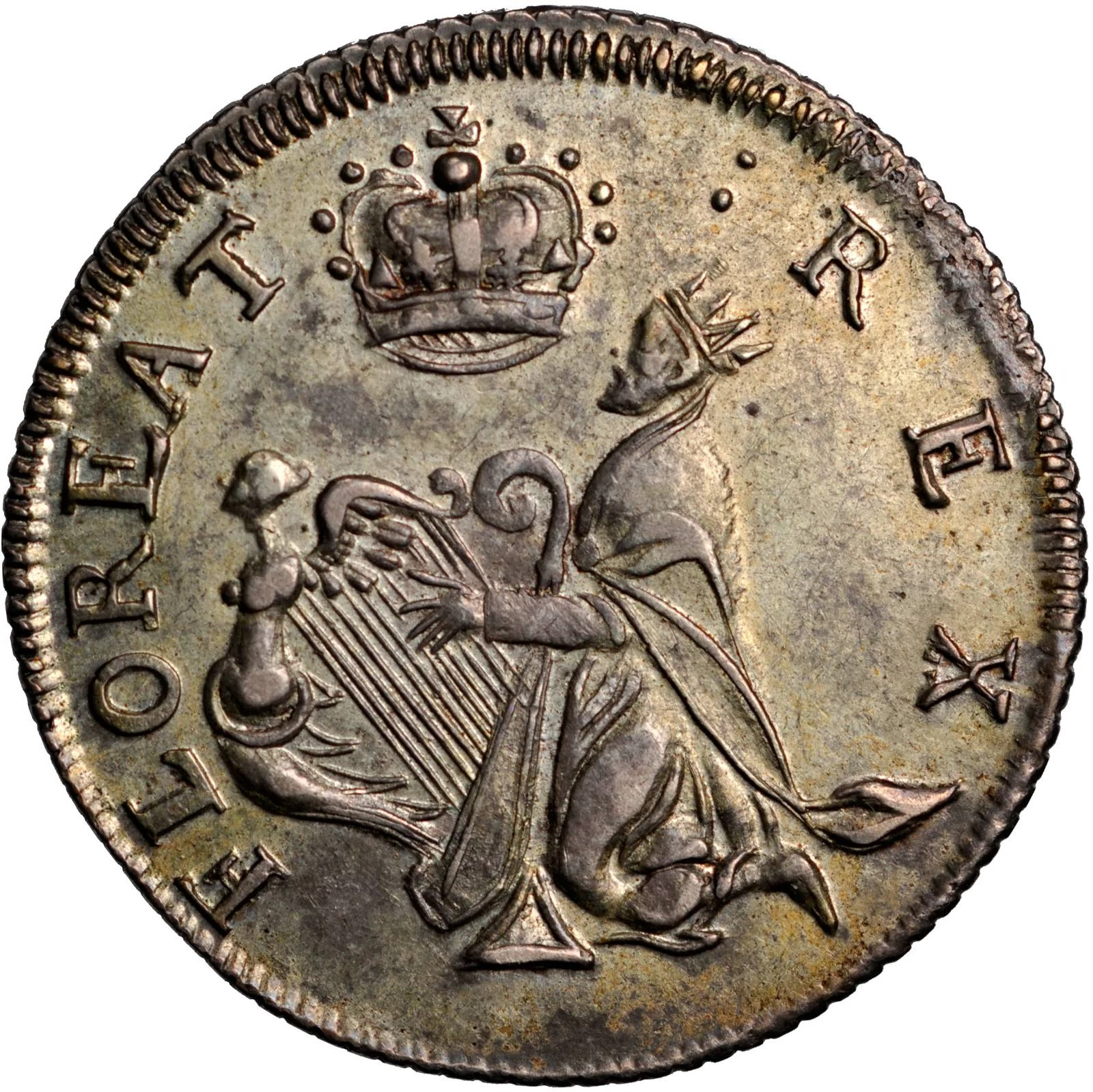Greysheet & CPG® PRICE GUIDE
- U.S. Coins /
- Colonial & Post-Colonial Issues /
- St. Patrick /
-
1663 St. Patrick
Sort by
Greysheet Catalog Details
The coinage was made legal tender by the General Assembly of New Jersey in May 1682. The legislature did not specify which size piece could circulate, only that the coin was to be worth a halfpenny in trade. Some numismatists believe the largersize coin was intended. However, as many more farthing-size pieces are known than halfpennies, most believe that the smaller-size piece was meant. Copper coins often circulated in the colonies at twice what they would have been worth in England.
The obverses show a crowned king kneeling and playing a harp. The legend FLOREAT REX ("May the King Prosper") is separated by a crown. The reverse side of the halfpence shows St. Patrick with a crozier in his left hand and a trefoil in his right, and surrounded by people. At his left side is a shield. The legend is ECCE GREX ("Behold the Flock"). The farthing reverse shows St. Patrick driving away serpents and a dragon as he holds a metropolitan cross in his left hand. The legend reads QUIESCAT PLEBS ("May the People Be at Ease").
The large-size piece, called by collectors a halfpenny, bears the arms of the City of Dublin on the shield on the reverse; the smaller-size piece, called a farthing, does not. Both denominations have a reeded edge.
The decorative brass insert found on the coinage, usually over the crown on the obverse, was put there to make counterfeiting more difficult. On some pieces this decoration has been removed or does not show. Numerous die variations exist.
Catalog Detail
Legal Disclaimer
The prices listed in our database are intended to be used as an indication only. Users are strongly encouraged to seek multiple sources of pricing before making a final determination of value. CDN Publishing is not responsible for typographical or database-related errors. Your use of this site indicates full acceptance of these terms.
| Value Range | Favorite | ||
|---|---|---|---|
| Value Range | |||
Greysheet Catalog Details
The coinage was made legal tender by the General Assembly of New Jersey in May 1682. The legislature did not specify which size piece could circulate, only that the coin was to be worth a halfpenny in trade. Some numismatists believe the largersize coin was intended. However, as many more farthing-size pieces are known than halfpennies, most believe that the smaller-size piece was meant. Copper coins often circulated in the colonies at twice what they would have been worth in England.
The obverses show a crowned king kneeling and playing a harp. The legend FLOREAT REX ("May the King Prosper") is separated by a crown. The reverse side of the halfpence shows St. Patrick with a crozier in his left hand and a trefoil in his right, and surrounded by people. At his left side is a shield. The legend is ECCE GREX ("Behold the Flock"). The farthing reverse shows St. Patrick driving away serpents and a dragon as he holds a metropolitan cross in his left hand. The legend reads QUIESCAT PLEBS ("May the People Be at Ease").
The large-size piece, called by collectors a halfpenny, bears the arms of the City of Dublin on the shield on the reverse; the smaller-size piece, called a farthing, does not. Both denominations have a reeded edge.
The decorative brass insert found on the coinage, usually over the crown on the obverse, was put there to make counterfeiting more difficult. On some pieces this decoration has been removed or does not show. Numerous die variations exist.
Catalog Detail
Legal Disclaimer
The prices listed in our database are intended to be used as an indication only. Users are strongly encouraged to seek multiple sources of pricing before making a final determination of value. CDN Publishing is not responsible for typographical or database-related errors. Your use of this site indicates full acceptance of these terms.




 Loading more ...
Loading more ...